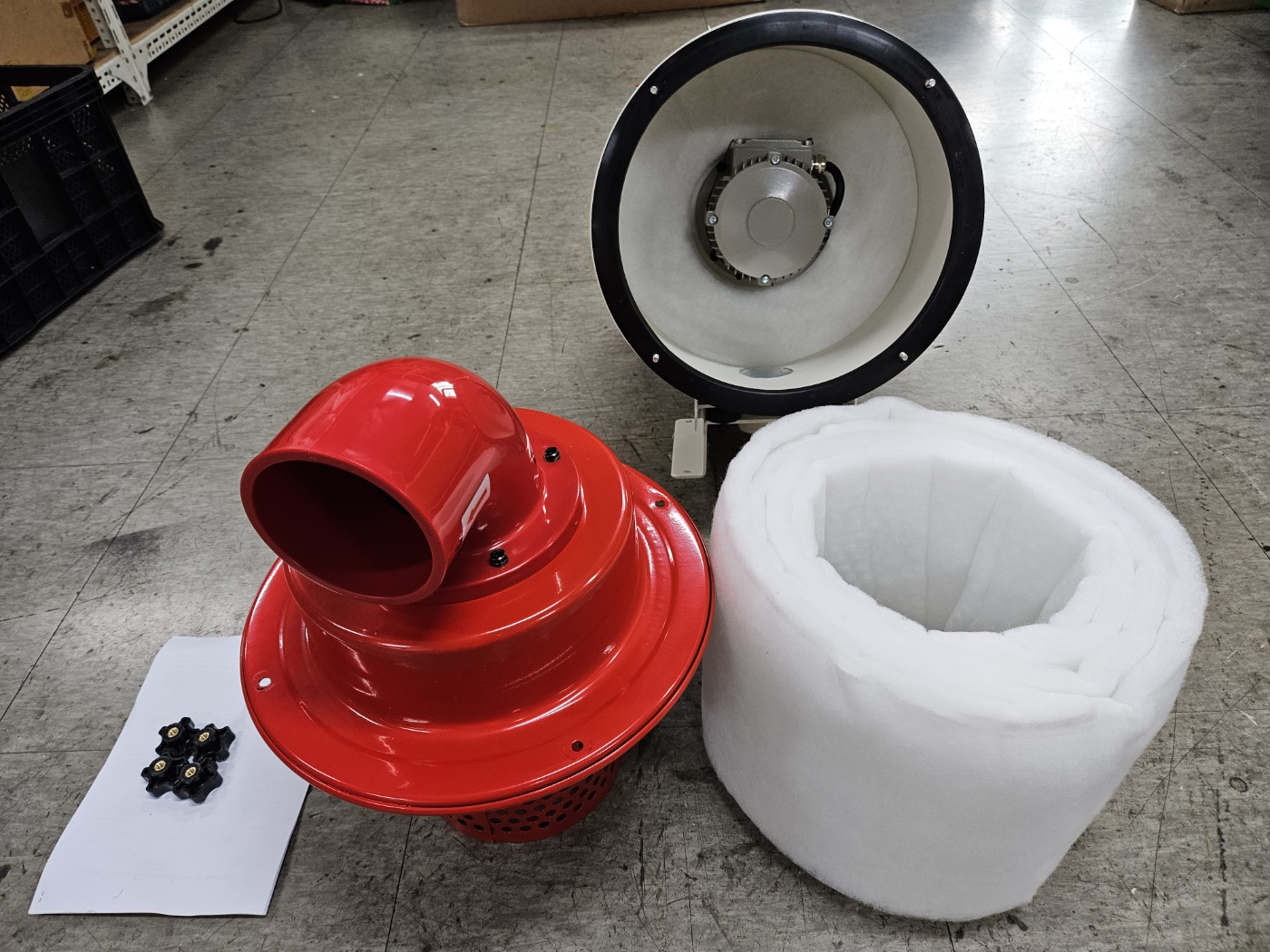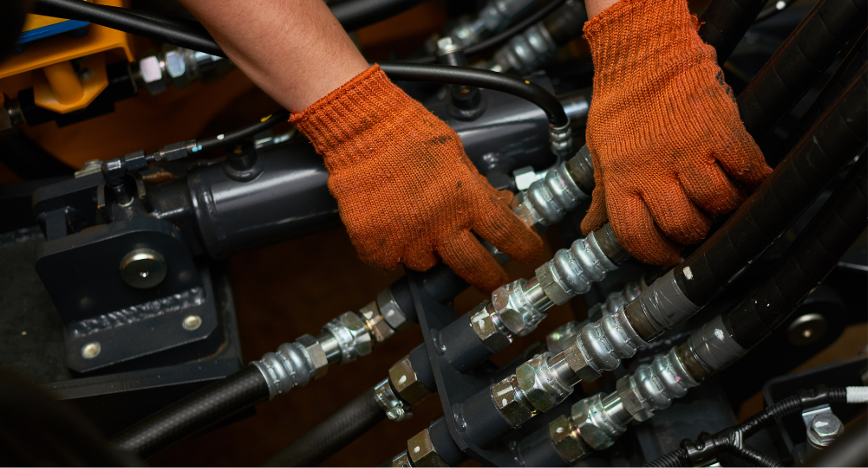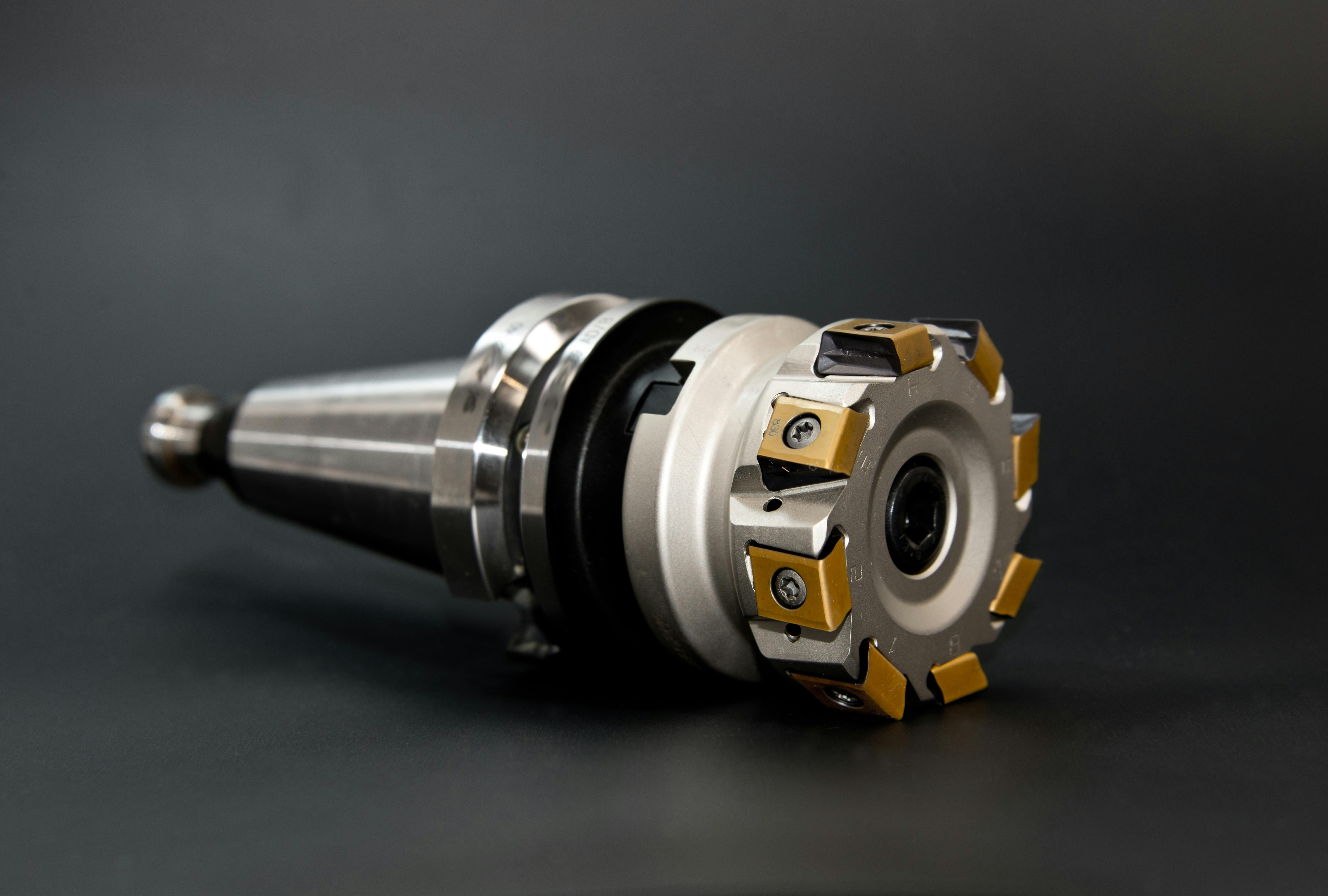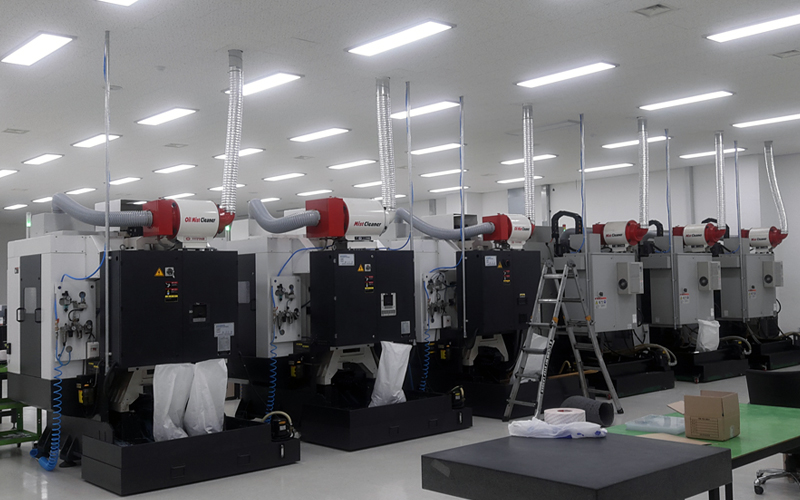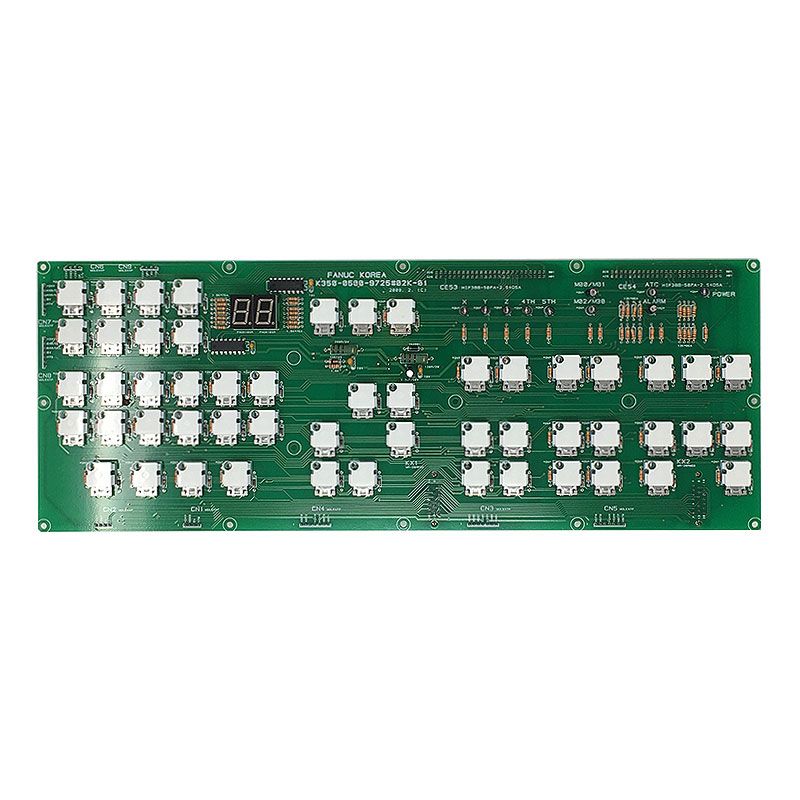 02Oct
02Oct
In our current modern industry, Printed Circuit Boards (PCBs) emerge as an indispensable force, silently powering a plethora of devices that have become integral to our daily lives. These unassuming PCBs lie at the heart of our industrial parts, smartphones, medical equipment, and automotive systems, serving as the unspoken heroes of our technological age.
The printed circuit board is composed of a substrate material for structural integrity and electrical insulation, coupled with intricate copper layers that form the vital conductive layers and pathways for electrical signals.
A printed circuit board powers the intelligence of smart devices, ensures the precision and efficiency of industrial equipment, and bolsters the reliability of automotive systems, making them an integral component of any innovation.
This holistic exploration of these single-layer and multi layer boards will not only illuminate their pivotal role but also lay the foundation for a deeper understanding of their applications across various industries. From powering smart devices to maintaining the precision of industrial equipment, PCBs are the linchpin that connects and empowers our modern technological world.
What is a PCB?
The Essence of Printed Circuit Boards
Printed Circuit Boards (PCBs) take center stage as the silent powerhouse behind the seamless operation of our technological operations. These unassuming yet invaluable printed circuits and wiring board serves as the cornerstone of our modern technological landscape, enabling devices that range from the everyday smartphone to life-saving medical equipment and precision automotive systems.
Deciphering PCBs at Their Core
At its essence, a printed circuit board is a flat, non-conductive board, predominantly composed of materials such as fiberglass or rigid substrate. Beneath the unassuming exterior lies a complex web of conductive pathways, typically crafted from copper, that is etched onto the board to form precise and intricate circuits. Without these components, our powerful circuit board is nothing but a bare board.
It is this process of merging of insulating material and conductive material pathways that empower circuit boards to fulfill their pivotal role - establishing electrical connections and pathways for the electronic components within.
Deconstructing PCBs: The Fundamental Components
In order to comprehend the inner workings of PCBs, it's crucial to dissect the circuit board into their building blocks:
Substrate Material:
A printed circuit board is constructed from non-conductive materials like fiberglass or composites. This substrate material serves a dual purpose: providing structural integrity to the on the circuit board while also acting as an electrical insulator. The selection of substrate material hinges on the intended application and environmental conditions, especially in the case of high-caliber circuit boards designed to withstand extreme temperatures, moisture, and other environmental challenges.
Flexible substrate materials are integral to the world of circuit boards. These thin, heat-resistant materials, typically composed of polymers, play a crucial role in modern computing electronic devices. Many of today's devices feature circuit boards constructed from these flexible substrates, showcasing the versatility and practicality of this innovative material.
The heart and soul of printed circuit boards are the conductive pathways, often made of copper, that meticulously weave across the substrate. These intricate networks create the vital conduits for electrical signals, ensuring the efficient transmission of electrical power. The layout and design of these traces are meticulously planned and executed, holding the key to determining the functionality of the PCB.
Copper Layers
A copper layer, forms intricate pathways for electrical signals. They play a crucial role in the functionality of PCBs. The specific arrangement and thickness of these copper layers are carefully designed to meet the requirements of the electronic device. The arrangement and thickness of these copper layers are not arbitrary; they are meticulously designed to meet the specific requirements of the electronic device.
One of the primary functions of the copper layer is to create a conductive network that allows electrical signals to travel between different components of the PCB. This conductive pathway is akin to a high density interconnect, where signals must navigate efficiently to ensure the proper functioning of the electronic device. To achieve this, PCB designers strategically place the copper layer between traces to establish optimal routes for signal transmission.
Types of Circuit Boards
A circuit board can come in various forms: rigid board, flexible board, and multi-layer PCBs. Each type of circuit board is tailored to specific application. Rigid PCBs maintain a solid, inflexible structure, while flexible PCBs offer bendability to fit into tight spaces. Multi-layer PCBs, as the name suggests, incorporate multiple conductive layers, enhancing their complexity and functionality.
Double-Sided Circuit Board
A subset of circuit boards is the double-sided circuit board. It features conductive traces on both sides of the same substrate layer, effectively doubling the available space for components and circuitry. By utilizing both sides of the circuit board for conductive traces, designers can pack a higher density of electronic components into its conductive layer.
In addition to increased component density, a double-sided PCB offer improved signal routing capabilities. With traces on both sides of the board, designers can create more intricate and efficient pathways for electrical signals. This is especially beneficial in complex circuit designs where signal integrity and minimal interference are crucial. The dual-sided nature of the double-sided PCB allows for the implementation of advanced routing techniques, contributing to the overall performance and reliability of electronic systems.
From an assembly and manufacturing perspective, the double-sided PCB presents unique challenges and opportunities. The intricacy of designing circuits on both sides necessitates precise manufacturing processes. Advanced fabrication techniques, such as precision drilling and through-hole plating, are employed to ensure the seamless connection of traces on both sides of the board. Additionally, the use of automated assembly equipment becomes crucial to accurately place and solder electrical components on both surfaces.
Single-Sided PCBs
In contrast to double-sided PCBs, single-sided PCBs (also known as single-layer PCB), a fundamental component in devices, boast a simplicity that aligns with various applications requiring less intricate circuitry. A single-layer PCB play a pivotal role in powering an array of electronic gadgets, from simple calculators to more sophisticated devices. Understanding the nuances of single-sided PCBs provides insight into their utility, design considerations, and advantages.
A single-layer PCB is characterized by the presence of conductive traces on only one side of the substrate, usually made of fiberglass-reinforced epoxy resin. The conductive traces are typically composed of copper, which is etched to form the desired circuit pattern. This streamlined design makes single-sided PCBs ideal for applications with uncomplicated electronic requirements.
Multi layer PCBs
A multi-layer PCB is a sophisticated form of circuitry that plays a crucial role in the functionality of advanced electronic devices. Unlike their single-sided or double-sided counterparts, the multilayer PCB offers a more complex and dense arrangement of components due to the presence of multiple layers.
The structure of a multi-layer PCB consists of several layers of copper traces, signal layers, power planes, and ground planes sandwiched between insulating layers. These layers are bonded together to form a compact and efficient circuit board. The number of layers can vary, ranging from four layers to dozens, depending on the complexity of the electronic device.
Within the multilayer PCB, there is a thin layer called a power and ground plane. Power and ground planes are dedicated layers that ensure stable power distribution and grounding throughout the entire circuit board, enhancing the overall performance and reliability of electronic devices.
In essence, a printed circuit board, whether rigid or flexible, single-sided or multi-layered, serves as the essential foundation for countless devices, providing the structural support and conductive pathways required for the seamless operation of modern technology.
The Role of PCBs in Electronics
Circuit boards serve as the electronic "brains" of machinery and systems. They control automation, data collection, and communication processes. Sensors, actuators, and controllers on the PCB interact with industrial equipment using its high speed circuits. Ultimately, PCB boards provide the means to automation and efficiency to a manufacturing process.
Consumer Electronics
Circuit boards are integral to almost all consumer electronics: smartphones, tablets, laptops, televisions, and home appliances. At the heart of printed circuit boards, they are fostering connectivity and communication between various components.
Smartphones owe their intelligence and multitasking capabilities to the sophistication of a printed circuit board. These miniature powerhouses are equipped with compact and thin layer of circuity, yet it has an intricate circuit board that enables them to handle complex operations.
Tablets, with their larger screens and versatile applications, rely on their printed circuit board to manage diverse functionalities. The circuit board has a robust architecture that ensures the tablet can effortlessly switch between tasks.
Laptops, the portable workhorses of the digital age, owe their compact designs and computational prowess to a well-designed circuit board. These boards optimize the placement of components, ensuring efficient heat dissipation and streamlined energy consumption, thereby contributing to the sleek and energy-efficient nature of modern laptops.
Our televisions are, in fact, another testament to an amazing computational prowess which are delivered by PCBs. These boards facilitate the transmission of signals, ensuring that the pixels align harmoniously to deliver breathtaking visuals and immersive entertainment experiences.
Even our home appliances, from refrigerators to washing machines, have embraced the intelligence bestowed by the circuit board. Their circuit board controls the various functions of these appliances, optimizing energy usage, ensuring safety features, and providing a level of automation that enhances our daily lives.
Industrial Equipment
In industrial settings, a circuit board powers and controls a wide range of equipment, from automated manufacturing machinery to robotics. Their precision and reliability are essential for maintaining smooth operations in these environments.
A circuit board, in relation to an industrial application, acts as the command center, ensuring that each component functions in harmony, contributing to the overall efficiency and productivity of the industrial process. Circuit boards contribute to the overall robustness of the equipment they power. In environments where downtime is not an option, the reliability of these boards becomes a mission-critical factor, ensuring that industrial processes continue without a hitch.
These boards can be customized to meet the specific requirements of different equipment, making them versatile tools for a wide range of applications. Whether it's fine-tuning the parameters of a manufacturing process or integrating new robotic functionalities, circuit boards provide the flexibility needed to keep pace with the ever-evolving demands of industrial technology.
As industries embrace the never-ending advances in technology, the role of circuit boards becomes even more pronounced. These boards facilitate connectivity and communication between different components of a smart industrial ecosystem, paving the way for data-driven decision-making and predictive maintenance.
The precision and reliability of circuit boards are not just about keeping the wheels of industry turning; they are about ushering in a new era of intelligent and efficient manufacturing. Their precision ensures accuracy, their reliability guarantees uninterrupted operations, and their adaptability allows industries to stay at the forefront of technological advancements. In the grand orchestration of industrial processes, circuit boards are the silent conductors, ensuring that every note is played with perfection.
Automotive Systems
Modern vehicles rely heavily on PCBs for everything from engine control to infotainment systems. These boards contribute to the safety, efficiency, and overall performance of automobiles. Automotive systems, today, require have many different types of printed circuit boards. These include: rigid flex pcb, rigid boards, and flexible boards.
Consider the heart of any vehicle—the engine. PCBs keep the engine running smoothly and efficiently. From managing fuel injection systems to optimizing ignition timing, these circuit boards ensure that every combustion cycle is a well-coordinated dance, maximizing both power and fuel efficiency. But the influence of PCBs doesn't stop under the hood.
Step inside the vehicle, and you'll find these boards seamlessly integrated into the dashboard, contributing to the sophisticated infotainment systems that have become a hallmark of modern driving experiences. Electrical components such as touchscreens, navigation systems, and connectivity features—all powered and controlled by PCBs.
Safety is paramount on the road, and once again, PCBs play a critical role in enhancing this aspect of automotive design. From airbag deployment systems to anti-lock braking systems (ABS), these boards ensure split-second responses to unforeseen events, contributing to the overall safety net that modern vehicles provide to their occupants.
Efficiency is a key priority in the automotive industry, and PCBs are key players in achieving this goal. Engine management systems, assisted by advanced sensors and control circuits, optimize fuel consumption and emissions, aligning with the global push towards eco-friendly and sustainable driving solutions. The automotive landscape is evolving, with electric and autonomous vehicles becoming increasingly prevalent.
In this era of transformation, PCBs are at the forefront of innovation, supporting the complex electronic architectures that define electric powertrains and autonomous driving systems. The precision and reliability of these boards are crucial in ensuring the seamless integration of advanced technologies that are reshaping the future of transportation.
In the competitive automotive market, manufacturers understand that the devil is in the details. The quality and design of PCBs directly impact the performance and reliability of vehicles, influencing customer satisfaction and brand reputation. As automotive systems become more sophisticated, the demand for advanced PCBs that can handle the complexities of interconnected electronic systems continues to rise.
Medical Devices
In healthcare, PCBs are crucial components of medical equipment, diagnostic devices, and even life-saving instruments such as pacemakers. They must meet stringent standards to ensure patient safety and device reliability. Types of PCBs that are widely used for important medical tools are either a rigid printed circuit board or a rigid-flex printed circuit board, as it is smaller in size and is able to fit in minute areas.
Picture the precision required in medical equipment—devices that are tasked with diagnosing ailments, monitoring vital signs, and administering treatments. A printed circuit board operates on these critical functions, ensuring that every heartbeat, every measurement, and every dose is delivered with accuracy and dependability.
Diagnostic devices, from advanced imaging machines to portable point-of-care systems, rely on meticulously designed PCBs to process and transmit data with precision. Whether it's an MRI machine capturing detailed images or a compact blood glucose monitor providing real-time information, these boards form the backbone of diagnostic technologies that guide medical professionals in making informed decisions about patient care. In the world of life-saving instruments, none epitomizes reliance on a printed circuit board more than pacemakers.
These devices, entrusted with regulating heart rhythms, demand the highest levels of precision and reliability. A rigid-flex PCB is often used in these pacemakers as a rigid-flex PCB reduces the number of parts needed for the design. The rigid-flex PCB ensures that electrical impulses are delivered to the heart with utmost accuracy, maintaining the delicate balance required for optimal cardiac function.
Patient safety is non-negotiable in the healthcare domain, and PCBs play a pivotal role in upholding this standard. These boards must adhere to stringent quality control measures and regulatory requirements to ensure that medical devices operate flawlessly within the human body. The design and manufacturing of medical-grade PCBs involve rigorous testing and validation processes, leaving no room for error in environments where the consequences could be life-altering.
The fast-paced advancements in medical technology, from wearable health monitors to robotic surgical systems, further underscore the importance of a printed circuit board. These boards enable the seamless integration of innovative features, ensuring that medical devices remain at the forefront of precision and efficiency. In a field where every second counts, reliability is paramount.
A printed circuit board, in medical devices, is designed with redundancy and fail-safes to guarantee continuous operation even in critical situations. The reliability of these boards is not just a technical requirement; it directly translates to the trust that healthcare professionals and patients place in life-saving and life-sustaining medical devices.
Design and Manufacturing of Circuit Boards
Creating a printed circuit board is a multi-step process that involves design, fabrication, and assembly:
Design: The Blueprint of Innovation
Engineers and designers use specialized software to create the printed circuit board layout. This includes determining the placement of electronic components and the routing of traces to ensure proper functionality.
At the inception of PCB creation lies the design phase, a realm where engineers and designers wield specialized software to craft the blueprint for the circuit board. This entails strategic placement of electronic components and the meticulous routing of traces to guarantee optimal functionality. The design phase is a dance of precision, where every element is strategically positioned to harmonize with the overall circuit architecture.
Fabrication: Transforming Designs into Reality
The PCB design is translate into physical form through a series of chemical processes. Copper is etched onto the substrate according to the design, and multiple layers may be stacked onto one substrate layer to create complex circuits.
Once the digital blueprint is perfected, the PCB design transcends into physical reality through the fabrication stage. This involves a series of chemical processes where copper is etched onto the substrate according to the design specifications. In the pursuit of complexity, multiple layers may be stacked to create intricate circuits. The fabrication stage is a technological alchemy, transforming a digital concept into a tangible and functional PCB.
Assembly: Precision in Every Solder
Once the PCBs are fabricated, electronic components such as resistors, capacitors, integrated circuits (ICs), and connectors are soldered onto the board. This assembly process requires precision and adherence to industry standards.
Joint With the fabricated PCBs in hand, the assembly phase takes center stage. Electronic components such as resistors, capacitors, integrated circuits (ICs), and connectors are meticulously soldered onto the board. This process demands precision and adherence to stringent industry standards to ensure the reliability and performance of the final electronic device. The assembly phase is the culmination of the PCB's journey, where it transforms from an amalgamation of components into a functional and cohesive unit.
Surface Mount Technology (SMT)
Printed circuit board assembly often involves surface mounting, where electronic components are mounted directly onto the surface of the PCB, eliminating the need for through-hole components. In this advanced assembly technique, electronic components are mounted directly onto the surface of the printed circuit boards, eliminating the need for traditional through-hole components.
Surface mount components offer a key advantage in that it significantly reduces the size and weight of electronic devices. Surface mount technology effectively optimizes component placement by directly placing materials onto the surface of the PCB. Surface mount technology eliminates the need for drilling holes through the board for component insertion. This not only streamlines the manufacturing process, but also allows for the creation of more compact and lightweight devices.
Moreover, surface mount technology enhances the overall efficiency of the assembly process. Traditional through-hole assembly methods involve time-consuming manual insertion and soldering of components. Surface mount technology utilizes pick-and-place machines to precisely position and solder surface mount components with remarkable speed and accuracy.
Industrial PCB Boards: Revolutionize Your Machine Processes
The name of the game is efficiency and accuracy. If there is one thing that we'd wish you'd take away from this process, it's to understand how effective a printed circuit board is at meeting those criteria. In industrial applications, those requirements remain paramount as industrial applications need to work efficiently to deliver precise and accurate outcomes that we need for our end products.
If you are convinced that your machine applications can benefit from a boost of efficiency and accuracy, allow us to recommend you a brand that has exceeded itself when making PCB Boards, catered to you industrial part professionals. 
If you believe that you can benefit from integrating a PCB Board into your industrial workflow, we highly recommend that you take a closer look at these PCB Boards. Unrivaled in its make, this PCB board can provide industrial companies the highest precision and accuracy you can get on the market.
Sources:
https://www.electronicsandyou.com/advantages-of-pcb.html
https://www.wevolver.com/article/components-of-a-pcb-a-comprehensive-guide
https://resources.pcb.cadence.com/blog/2023-an-introduction-to-printed-circuit-boards
https://custommaterials.com/how-do-circuit-boards-work/#BN-6f00a13cc12bd1cf
https://www.protoexpress.com/kb/pcb-substrates/
https://emsginc.com/resources/10-common-pcb-applications/
https://www.clarydon.com/applications-of-printed-circuit-boards
https://www.pcbcart.com/article/content/PCB-applications.html


